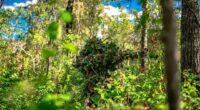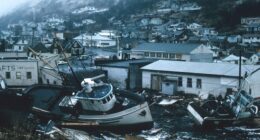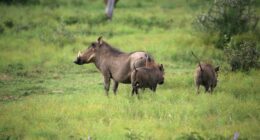Mangroves are a type of tree that grows in coastal areas. Unlike other trees, they have special adaptations that allow them to survive in salty water and harsh conditions. Mangroves are an important part of the ecosystem because they provide a habitat for many different animals and help to protect the coastline from erosion. Swamps, on the other hand, are wetland areas that are often found inland. Swamps are home to many different types of plants and animals, and they play an important role in the environment by providing habitat and helping to filter water.
What is a mangrove?
A mangrove is a shrub or small tree that grows in coastal saline or brackish water. The term is also used for tropical coastal vegetation consisting of such species. Mangroves occur worldwide in the tropics and subtropics, mainly between latitudes 25° N and 25° S.
Mangroves are salt-tolerant trees, shrubs, or bushes that grow in dense formations along sheltered coasts in the tropics and subtropics. They are adapted to live in harsh coastal conditions, and their roots are often submerged in seawater. Mangroves typically have a complex root system that helps to stabilize the soil and protect against erosion.
Mangroves provide important habitats for a variety of animals, including fish, crabs, shrimp, birds, and mammals. The dense root systems of mangroves trap sediment and debris from the surrounding water, providing a valuable source of food and shelter for many animals. Mangroves also help to protect coastlines from the damaging effects of storms and tides.
There are three main types of mangroves: Red mangroves (Rhizophora spp), Black mangroves (Avicennia spp), and White mangroves (Laguncularia racemosa). Red mangroves are the most common type of mangrove found in Florida. Black mangroves are found along the Gulf Coast of the United States, while white mangroves the coastal areas of south Florida, the Caribbean, and Central America.
What is a swamp?
A swamp is a waterlogged, wooded area that supports an ecosystem of aquatic plants and animals. Swamps are found throughout the world, but they are especially common in tropical regions.
Swamps are characterized by slow-moving or stagnant waters and the lush growth of vegetation. The water in a swamp may be fresh, saltwater, or brackish (a mix of the two). Swamps are home to a variety of plant and animal life, including fish, amphibians, reptiles, mammals, and birds.
The word “swamp” is derived from the Old English word swampe, which means “marshy ground.”
Mangrove Vs. Swamps – Key differences
There are a few key differences between mangroves and swamps. For one, mangroves tend to have saltier water than swamps. This is because mangroves are often located near the ocean, where there is a high concentration of salt in the water. Swamps, on the other hand, are usually found inland and have fresher water as a result.
Another difference between the two is the type of vegetation that grows in each. Mangroves are characterized by their namesake trees, which have special roots that allow them to thrive in saltwater. Swamp plants, on the other hand, are typically not as well-adapted to salty conditions and may die if they are submerged in saltwater for too long.
Mangroves and swamps also differ in terms of their soil composition. Mangrove soils tend to be very sandy due to the tidal conditions that they experience. Swamps, on the other hand, often have heavy clay soils that can make it difficult for plants to grow.
What are the characteristics of mangrove forests?
Mangrove forests are characterized by their dense tangle of woody roots and branches, which provide support and structure for the trees in the often-saturated soils in which they grow. This extensive root system also helps to stabilize the mangrove forest against strong winds and waves. The leaves of mangrove trees are typically leathery and have a waxy coating, which helps to prevent them from being waterlogged. The bark is often thick and cork-like, providing additional protection against flooding.
Mangrove forests occur in tropical and subtropical areas around the world. They are particularly common along coastlines where there is a high sediment load, such as in river deltas or on sheltered shores. Mangroves play an important role in these ecosystems, providing habitat for a variety of animals and helping to protect against erosion.
How are swamps formed?
The formation of a swamp begins with the development of a wetland. A wetland is an area of land that becomes periodically inundated with water. Wetlands develop when the natural hydraulic conditions of an area create conditions that favour wetland plants over other types of vegetation.
There are four main types of wetlands: marshes, bogs, fens, and swamps. Each type of wetland forms under different environmental conditions. Swamps form under conditions that are conducive to the growth of trees and shrubs; bogs form under conditions that favour mosses; fens form under conditions that support sedges; and marshes form in areas where there is a good supply of water but where the soils are not heavily saturated.
Are swamps dangerous?
Yes, swamps can be dangerous places. They are often home to alligators, snakes, and other dangerous wildlife. The water in swamps is also usually murky and filled with bacteria. This can make it difficult to see what is swimming below the surface and easy to get bitten or scratched by something lurking in the water.
Do swamps dry up?
Some swamps may dry up during the summer months or during periods of drought, but they will typically refill with water during the wetter months.









